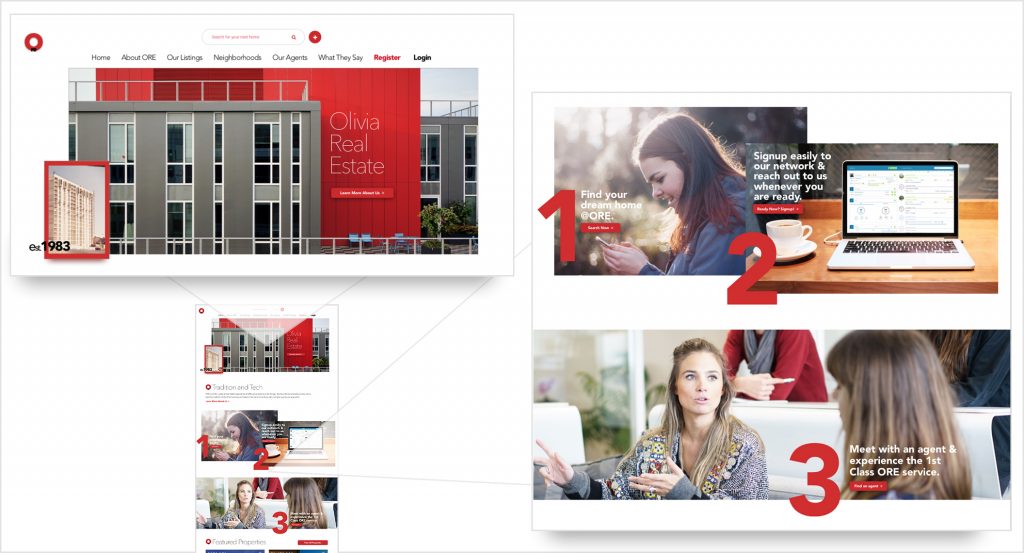In my last post, we talked about the importance of storytelling and some examples of it done well, but how do you do it for real estate brokerages? Let’s dive in.
A. FIGURE OUT THE STORY
Right out of the gate, actually having the story you want to tell is the trickiest part. And in this general post, there’s not a ton I can do to help you with your personal story for your particular brokerage. The good news is it’s your own story; you should know it pretty well.
The only real advice I could give is to be fully transparent about your story, with three important caveats gleaned from a list of “Story Basics” by former Pixar director and current Googler, Emma Coats. Here are some highlights from the piece:
“#2: You gotta keep in mind what’s interesting to you as an audience, not what’s fun to do as a writer. They can be very different.”
Translated: It’s easy to tell every detail or something you think is funny or endearing. But does your reader think so? Don’t keep them there any longer than they need to be. Just like I’ve described tirelessly, PLAN. Ask, “Why is this sentence in here?” And if you do it correctly, you’ll have an outline with relevant points you want to hit, which will make it easier to choose what scenes you want to show on your brokerage’s site.
Learn About Our New Ads and Leads Program - TRIBUS Engage
“#5: Simplify. Focus. Combine characters. Hop over detours. You’ll feel like you’re losing valuable stuff but it sets you free.”
Translated: This goes arm-in-arm with #2. Stay on message. If anything doesn’t align with it, you have to ditch it. But if it supports your overall theme, that’s all that really matters. REMEMBER!, writing your story is very different from it appearing on your website. Something longwinded can be broken up into a few pictures online, which I’ll get to in the next section.
“#8: Finish your story, let go even if it’s not perfect. In an ideal world you have both, but move on. Do better next time.”
Translated: Storytelling is not your primary job, so don’t be surprised if it doesn’t come out exactly as you imagined it. Put some legitimate thought and get it out. Your story isn’t finished, nor is it perfect. You’ll get another opportunity to tell it.
Taking these critical points, I’ve drafted my own short story about a fictional Olivia at ORE Brokerage to put into action:
“Olivia wants to tell the story of why she started her brokerage and her client dedication.
She’s a third-generation realtor. Her family taught her the importance of relationships and building community and that is why she chose to get into the family business.
Learn About Our New Ads and Leads Program - TRIBUS Engage
She started her business on the traditions that were ingrained in her. But as she started paying her dues, tech was obviously changing the industry.
She found not all her strategies were working and realized she need to adapt to the landscape.
She positions his brokerage around a people-focused balance between tradition and technology.”
To reiterate some of the foundational things I tried to get right with Olivia’s story:
- Olivia has a simple theme of “Tradition and Tech.” Tradition refers to her family history in the real estate business, while the tech part is how she tries to innovate these timeless business practices that are very important to her. We all can relate to family on some level and we all use tech, don’t try to use a paragraph when a couple of sentences will do.
- There are no stories of her affinity for rock climbing or the outdoors. Although they may hammer home her dedication & drive, they don’t directly benefit a potential client unless they are also an outdoorsman, which can be a small market — unless they are in a highly wooded area, which, in that case, use it. Be personal, but not too personal if it doesn’t appeal to the audience you are speaking to. In this case, I would hammer home the family real estate dynamic and how they’ve been translated to tech. Everyone loves a “before and after” story.
B. PIECE TOGETHER YOUR STORY AROUND YOUR THEMES
Olivia’s first theme is the family aspect. So let’s get some photos of the family and some of the current real estate team. And photos are obviously influential. But sometimes you don’t have that photo or maybe you don’t want to plaster your face all over the home page. You could also use the office or something else that draws the history of ORE, like a timeline.
Learn About Our New Ads and Leads Program - TRIBUS Engage
The second theme is the client experience. Sometimes it’s as easy as spelling it out for the user. Don’t over complicate the process by being too wordy. Just like showcasing the family aspect, photos can illustrate your point and especially in this case, if you have the means, a video is an invaluable resource.
Putting these concepts together, to me, ORE would look something like this:

It illustrates history, by showing an old photo of the office in 1983 that isn’t overpowering, and I show the 2017 version large, which hopefully pulls the user in and subtly shows how far the company has come from its early beginnings.
Next is the tagline, which gives a little explanatory text, which I took from the short story earlier in the post.
And right after that, I show a photo collage of the process that Olivia wants users to go through, showing how simple it is with three easy steps that also doubles as calls to action if the user is already committed and wants to get involved. As users view it, they feel engaged because it is directly asking them to get involved. As obvious as that sounds, you’ll be surprised how often companies just throw a button up, without a coherent explanation.
And the images are big and bold, aiming to capture attention through easily digestible sections because users usually leave within 10-20 seconds?
That pretty much accomplishes the story of family and the client experience, which leaves you with plenty of room to add things like featured properties, agents or anything else you think is important. Add details like brand colors — a xerox study says colors keep the user’s attention and recall ability by 82%.
I could keep going on many more things to focus on, but in the end, it’s finding out what is right for you and your real estate brokerage. Take these techniques and figure out how they fit with your story, but if you take anything away from this piece, it’s to be honest and transparent. This is what makes people stay longer, remember you, and come back for more.

